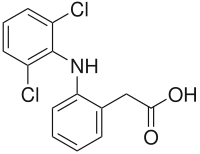
Photo from wikipedia
The presence of pharmacologically active compounds (PhACs) in surface waters poses an environmental risk of chronic exposure to nontarget organisms, which is a well-established and serious concern worldwide. Our aim… Click to show full abstract
The presence of pharmacologically active compounds (PhACs) in surface waters poses an environmental risk of chronic exposure to nontarget organisms, which is a well-established and serious concern worldwide. Our aim was to determine the temporal changes in ecological risk quotient (RQ) based on the concentrations of 42 PhACs from six sampling sites on seven sampling dates in the water of a freshwater lake in Central Europe preferentially visited by tourists. Our hypothesis was that the environmental risk increases during the summer holiday season due to the influence of tourists. Different experimental toxicological threshold concentrations and seasonal measured environmental concentrations of 16 PhACs were applied to ecological risk assessment. RQs of 4 dominant PhACs (diclofenac, estrone [E1], estradiol [E2], and caffeine) indicated high ecological risk (RQ > 1) for freshwater ecosystems. Additionally, our results confirmed the assumptions that the high tourist season had a significant impact on the calculated RQ; however, these results are mainly due to the concentration and temporal change of particular PhACs, including diclofenac (5.3-419.4 ng/L), E1 (0.1-5.5 ng/L), and E2 (0.1-19.6 ng/L). The seasonal dependent highest RQs changed as follows: 9.80 (June 2017; E2), 1.23 (August 2017; E1), 0.43 (November 2017; E1), 0.51 (April 2018; E1), 5.58 (June 2018, diclofenac), 39.50 (August 2018; diclofenac), and 30.60 (October 2018; diclofenac).
Journal Title: Environmental Science and Pollution Research
Year Published: 2020
Link to full text (if available)
Share on Social Media: Sign Up to like & get
recommendations!